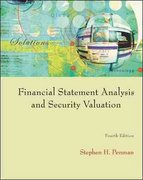V-Foenz, Inc., is a small telecommunication company operating out of Montreal. It was incorporated in 2015 and established a defined benefit pension plan for its employees from that year. The company computes interest expense accruing on the Defined Benefits Obligation as well as the expected returns on the Plan Assets on balances existing at the beginning of the year. It also adjusts those balances for changes effected by any transactions occurring at the beginning of the year. The pension accounts for 2020 are in disarray and so you have been retained to help in straightening matters out in this area. You begin your work sometime in early January and were introduced to their "rookie accountant", Kris Kross. You learn from him that V-Foenz followed ASPE procedures and ended its accounting year on December 31. He reluctantly provides you the following information for 2020 with a clear warning, "I am sure these ain't right, but I'll help the best I can": "I just joined this company a couple of weeks ago and therefore I do not know what were the beginning balances of either the Defined Benefits Obligation or the Plan Assets. Sorry about that!" "Oh yah, I definitely know the interest expense for the year was $91,000 which included the interest paid on the past service cost recorded at the beginning of 2020." "The Investment Committee, in my opinion, has done a very poor job of investing the assets of this plan. Actually, we received a mere $28,700 as the actual returns on our investments. This is a far cry from the 6.5% rate which the plan management was shooting for. They have also set the overall discount rate at that rate. My bosses should really hire me as their Investment manager. I bet I can do a much better job." Upon your prodding, he shuffled some papers and began reading out a bunch of figures: "$134,000 for current service costs and wow, $40,000 for past service costs awarded starting the beginning of this year to a new executive. I should have got some of that too since I too am an executive. Then $104,000 was paid to existing retirees. We should have made them work for a longer period; after all, paying people for doing nothing isn't a very smart strategy. And the company paid a mere $62,000 into the plan which is too little." He further mumbled that he should have been appointed the CEO to straighten things out. You quizzed him further on the status of the funding of the Plan. "Ah, the Plan is so poorly funded. We have an under funding of $700,000 at the beginning of the year even before including the past service costs I mentioned previously. If I was the Plan Trustee, I would insist that this company make up the deficit immediately or I would call a strike." He got most agitated when you asked him about the closing balances at the end of 2020. "Some outsiders came in, snooped around a bit, got paid an enormous fee and suggested that the ending balance for the Defined Benefits Obligation on December 31, 2020 was undervalued. They asked us to record a loss of $336,000 which, in my opinion, was just a made-up figure. Come on, what loss? We spent nothing other than what I just mentioned and so what could have created this huge loss" Required: 1. Prepare a pension worksheet, in good format, showing the results of all the transactions stated above in the question. 2. Prepare the necessary journal entries which the company would require to record the aggregate effects of the pension fund activities of the plan. 3. What would be the amount of Pension Expense the company would record if it were following IFRS instead of ASPE







